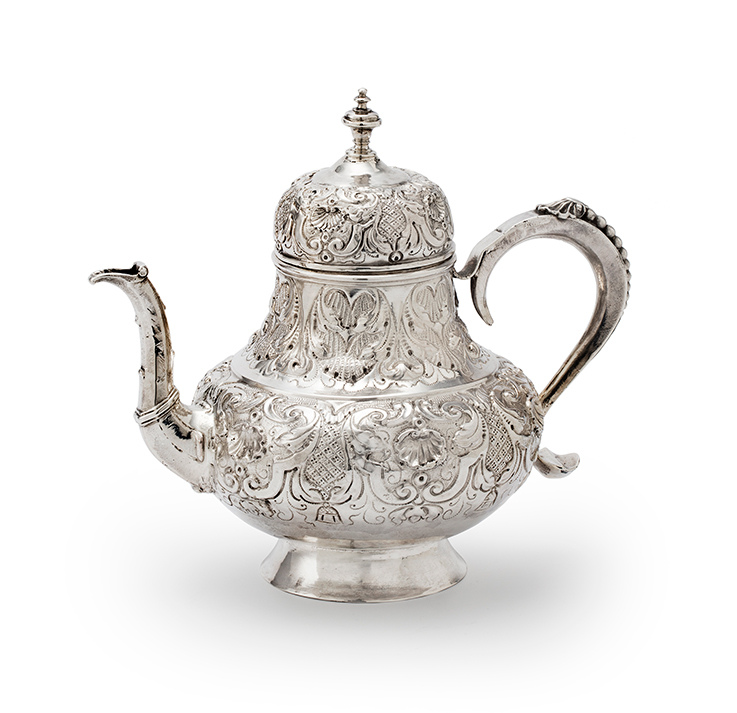
Dutch silver teapot
About This Project
Dutch silver teapot
Jan Verdoes
Haarlem, 1755
285 grams; 16,5 cm high
The baluster-shaped teapot, whose body and detachable lid are chased with Daniel Marot motifs, such as shells, lambrequins and scrolling foliage, stands elevated on a round plain base. The silver volute-shaped handle is applied on top with a shell motif followed by a sloping pearl border. The slightly curved spout is faceted. On the inside of the base the initials MPVD and WAV are engraved. Fully marked on the reverse of the body and displaying an assay stripe.
Jan Verdoes (c. 1703- 1768), born around 1703 as son of Jan Verdoes and Anna van der Heyden, married Lena Witman in 1732 and lived in the Begijnsteeg in Haarlem. In 1735 he became a member of the Haarlem silversmiths’ guild and was active as a service worker and maker of Catholic church silver until 1768. Two maker’s marks are known of him. IV and IVD. On a list from 1745 of the Generaliteits Muntkamer he is mentioned as a work master-service worker at the Spaarne. His oeuvre is very diverse.
Tea culture in the Netherlands
Due to merchants of the East India Company (VOC), who came across tea ceremonies in China and Japan, tea was introduced in the Netherlands. They saw potential in this commodity and started transporting large quantities to Amsterdam, where it was stored in canal houses and then auctioned at high prices. Therefore, tea used to be an exclusive drink for the higher classes. Initially, tea was considered to be a medicinal beverage, which was promoted by doctors like Anthoni van Leeuwenhoek, Boerhave, Tulp and Bontekoe. Tea would purify the blood, stimulate the mind and thus enrich the East India Company stakeholders. At the end of the seventeenth century tea was still a luxury product, drunk by wealthy ladies, who organised tea parties. In the beginning of the eighteenth century the popularity of tea increased. A special room in the house and even outside the house was furnished with a tea table and all the necessary accessories. Still standing tea domes at the river Vecht are relics of our tea drinking past. The accessories consisted of precious porcelain and silver items, which stressed the high status of tea.
Silversmiths were commissioned to make small silver pots and large silver water kettles with burners on stands. Hot water from the latter ones was poured into the small silver pots, containing the tea. Furthermore, tea caddies (with locks) and tea chests with two or three silver caddies were ordered, for several tea blends.
For more information, click here



